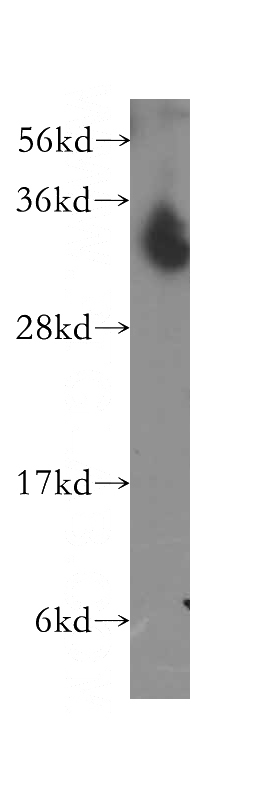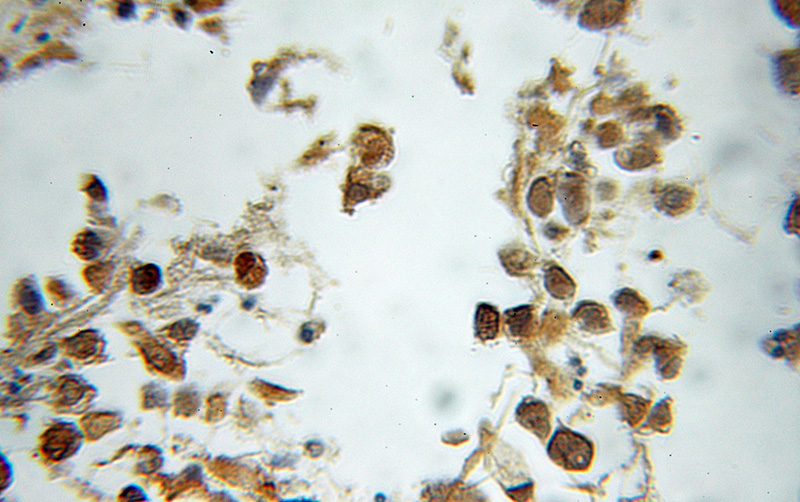-
Product Name
NTHL1 antibody
- Documents
-
Description
NTHL1 Rabbit Polyclonal antibody. Positive WB detected in human brain tissue. Positive IHC detected in human gliomas tissue. Observed molecular weight by Western-blot: 34 kDa
-
Tested applications
ELISA, WB, IHC
-
Species reactivity
Human,Mouse,Rat; other species not tested.
-
Alternative names
NTH1 antibody; NTHL1 antibody; OCTS3 antibody
-
Isotype
Rabbit IgG
-
Preparation
This antibody was obtained by immunization of NTHL1 recombinant protein (Accession Number: NM_002528). Purification method: Antigen affinity purified.
-
Clonality
Polyclonal
-
Formulation
PBS with 0.1% sodium azide and 50% glycerol pH 7.3.
-
Storage instructions
Store at -20℃. DO NOT ALIQUOT
-
Applications
Recommended Dilution:
WB: 1:200-1:1000
IHC: 1:20-1:200
-
Validations

human brain tissue were subjected to SDS PAGE followed by western blot with Catalog No:113400(NTHL1 antibody) at dilution of 1:400

Immunohistochemical of paraffin-embedded human gliomas using Catalog No:113400(NTHL1 antibody) at dilution of 1:50 (under 10x lens)
-
Background
NTHL1, also named as Endonuclease III-like protein 1 or ocTS3, is a 312 amino acid protein, which belongs to the Nth/MutY family. NTHL1 localizes in the nucleus and is widely expressed with highest levels in heart and lowest levels in lung and liver. NTHL1 Has both an apurinic and/or apyrimidinic endonuclease activity and a DNA N-glycosylase activity and incises damaged DNA at cytosines, thymines and guanines. NTHL1 acts on a damaged strand, 5' from the damaged site and is required for the repair of both oxidative DNA damage and spontaneous mutagenic lesions.
-
References
- Kremer TM, Rinne ML, Xu Y, Chen XM, Kelley MR. Protection of pulmonary epithelial cells from oxidative stress by hMYH adenine glycosylase. Respiratory research. 5:16. 2004.
Related Products / Services
Please note: All products are "FOR RESEARCH USE ONLY AND ARE NOT INTENDED FOR DIAGNOSTIC OR THERAPEUTIC USE"
